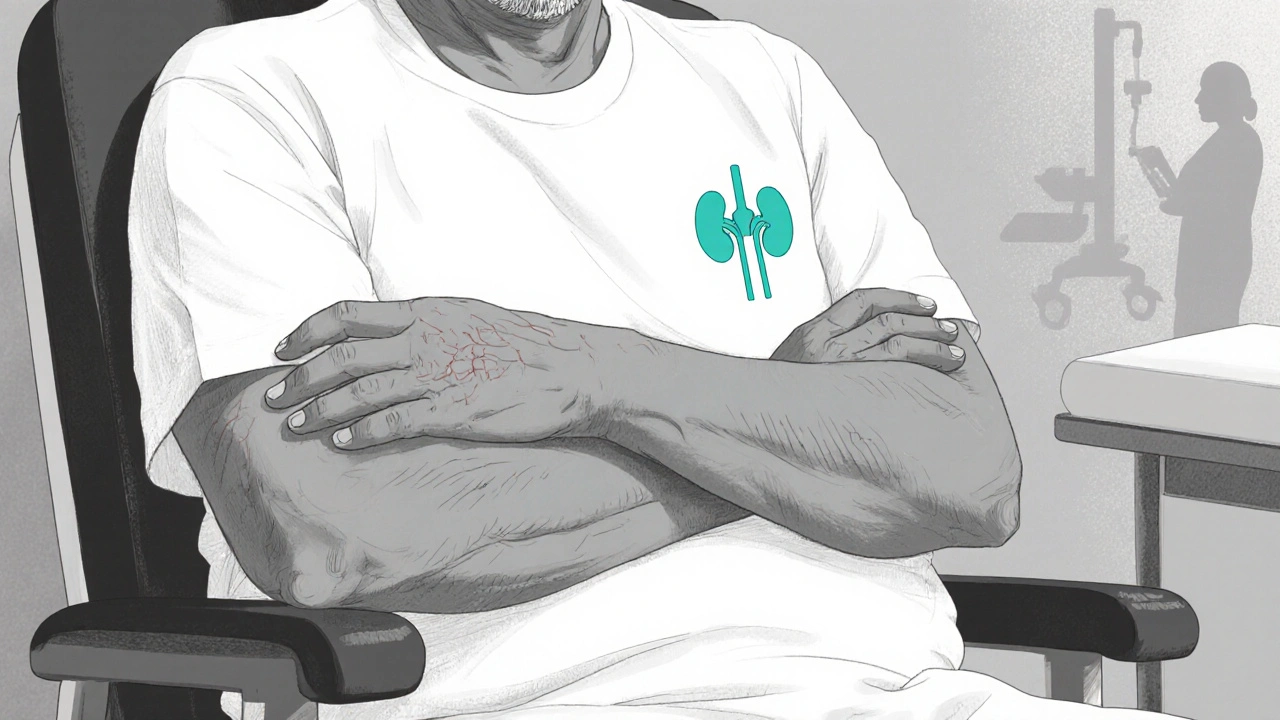Manage Pruritus in Kidney Disease: Practical Tips & Treatments
When dealing with pruritus in kidney disease, persistent itching caused by the buildup of waste products when kidneys fail. Also known as uremic pruritus, it often gets worse as Chronic Kidney Disease, the gradual loss of kidney function that leads to toxin accumulation advances. The itch can show up on the arms, legs, back, or anywhere the skin feels dry and irritated. Dialysis, a treatment that filters blood when kidneys can’t sometimes eases the problem, but many patients still need extra help. Managing this symptom typically requires a mix of skin care, medication, and lifestyle changes. In short, pruritus in kidney disease is a complex symptom that links skin health, toxin levels, and treatment choices.
Key Strategies to Relieve Kidney‑Related Itch
First, keep the skin moisturized. Plain, fragrance‑free creams or ointments applied right after a shower lock in moisture and break the itch‑dryness cycle. Second, consider oral antihistamines, drugs that block histamine receptors and can calm itching like cetirizine or hydroxyzine; they work best when taken at night. Third, look at your dialysis schedule – longer or more frequent sessions can lower toxin levels and may reduce itch intensity. Fourth, try topical treatments such as menthol or capsaicin creams; they create a mild cooling or warming sensation that distracts the brain from the itch signal. Finally, watch your diet: limit high‑phosphate foods and stay hydrated (if your doctor allows) because fluid balance influences toxin buildup.
Beyond skin care, some patients benefit from newer options. Gabapentin and pregabalin, originally for nerve pain, have shown promise in dampening the nerve signals that trigger itch. Phototherapy, which uses narrow‑band UV‑B light, can reset skin cell activity and is sometimes offered at nephrology centers. If you’re on a low‑dose opioid for pain, ask your doctor whether it might be contributing to the itch; switching to a non‑opioid analgesic can help. Remember, every step you take—whether adjusting meds, tweaking dialysis, or simply using a richer moisturizer—creates a chain reaction that can lower the severity of pruritus.
All of these approaches tie back to the central idea that pruritus in kidney disease requires a layered plan that mixes skin‑level care, systemic medication, and treatment‑related adjustments. Below you’ll find a curated set of articles that dig deeper into each of these tactics, from drug reviews to lifestyle hacks, so you can pick the strategies that fit your situation best.
Itching and Kidney Disease: Causes, Symptoms & Relief
- Laura Ledas
- Oct, 12 2025
Learn why itching often signals kidney disease, how uremic pruritus develops, and practical steps-from skin care to medications-to ease the discomfort.
Learn More